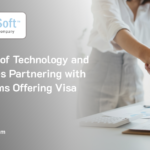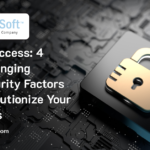

In today’s hyperconnected digital world, cybersecurity is more critical than ever. From data breaches to ransomware attacks, the threats to our digital lives continue to evolve and multiply. Whether you’re a seasoned IT professional or just someone who values their online safety and security, understanding the fundamental concepts of cybersecurity is essential. In this blog, we’ll cover the basics of cybersecurity, including threats, vulnerabilities, and the paramount importance of cybersecurity in our daily lives.
If Cybersecurity was its own economy, it would be the world’s 3rd largest!
What is Cybersecurity?
Cybersecurity is the practice of protecting computer systems, networks, and data from theft, damage, or unauthorized access. It encompasses a wide range of strategies, technologies, and processes designed to safeguard digital assets.
Threats in the Cyber Landscape
Cyber threats come in many forms, each with its own objectives and methods. Understanding these threats is crucial for effective cybersecurity:
- Malware: Malicious software, including viruses, worms, Trojans, and ransomware, is designed to infiltrate and compromise systems.
- Phishing: Phishing attacks use deceptive emails or websites to trick users into revealing sensitive information, such as login credentials or credit card details. Phishing attacks can appear as emails from trusted sources such as peers, banks, government official requests etc.
- Social Engineering: Social engineering exploits human psychology to manipulate individuals into divulging confidential information or performing actions against their best interests. Social Engineering exploits are often delivered via phone calls designed to scare you if you do not divulge the information the caller is seeking. They are also delivered by physical means such as following an employee into a secured office, retrieving confidential documents from reception areas or trash cans etc.
- Zero-Day Exploits: Attackers exploit software vulnerabilities that are unknown to the software’s creators (zero-days) to gain unauthorized access. Zero-day attacks are delivered to unpatched software and systems that have known or discoverable vulnerabilities.
- Insider Threats: These threats come from within an organization and can involve employees or contractors with malicious intent or accidental actions that compromise security.
- Ransomware: Ransomware is an ever-evolving form of malware designed to encrypt files on a device, rendering any files and the systems that rely on them unusable. Malicious actors then demand ransom in exchange for decryption. Ransomware actors often target and threaten to sell or leak exfiltrated data or authentication information if the ransom is not paid. In recent years, ransomware incidents have become an increasingly prevalent source of attack on companies as well as individuals. Ransomware is super stealthy and can be delivered via malicious emails or software, as well as through hardware (computer, tablet etc) or network communication vulnerabilities (VPN connection, public Wi-Fi etc.).
Vulnerabilities: Weak Points in Cybersecurity
Vulnerabilities are weaknesses or gaps in a system’s defenses that attackers can exploit. Common vulnerabilities include:
- Outdated Software: Failure to update operating systems and software leaves systems open to exploitation of known vulnerabilities.
- Weak Passwords: Passwords that are easy to guess or not regularly changed are a common vulnerability.
- Lack of Training: Inadequate cybersecurity education and training can result in employees falling victim to phishing or social engineering attacks.
- Unpatched Systems: Failing to apply security patches and updates can expose systems to known vulnerabilities.
- Weak Passwords: Using a password that is easily decipherable is one of the most common methods of cybersecurity breach.
- Lack of Multi-Factor Authentication: Multi-factor authentication (MFA), protects your access to systems, applications, and web portals etc. by using a second source of validation before granting access to users. Most MFA systems deliver a code to your cell phone or email that is only accessible by the person seeking access. This code is then used as a secondary validation prior to approved entry to the requested system, application or web portal.
The Importance of Cybersecurity
The importance of cybersecurity cannot be overstated, and here are some reasons why it’s crucial:
- Protection of Sensitive Data: Cybersecurity safeguards personal and sensitive information, preventing identity theft, financial fraud, and privacy breaches.
- Business Continuity: For organizations, cybersecurity ensures that operations can continue uninterrupted, avoiding downtime, reputational damage, and financial losses.
- National Security: Cyberattacks can have far-reaching consequences, impacting critical infrastructure, government systems, and national security.
- Global Economy: As the global economy becomes increasingly digital, cyber threats can disrupt financial markets and international trade.
Steps Towards Cybersecurity
To enhance your cybersecurity posture, consider the following steps:
- Stay Informed: Keep up to date with the latest cybersecurity threats and best practices.
- Use Strong Passwords: Create complex, unique passwords for each online account and consider using a password manager. Passwords should always be longer than 10 characters and utilize a series of capital letters, numbers and special characters.
- Implement Multi-Factor Authentication (MFA): Enable MFA wherever possible to add an extra layer of security.
- Regularly Update Software: Keep your operating system, software, and antivirus programs updated.
- Educate Yourself: Learn about common cyber threats and how to recognize them, especially phishing attempts.
- Back Up Data: Regularly back up important data to ensure you can recover it in case of a cyberattack. Backups should be stored at a secondary source and not on the same device for which the backup serves.
- Perform Regularly Scheduled Security Risk Assessments: A security risk assessment identifies, assesses, and implements key security controls for user access, data, systems, applications and network. It also focuses on providing advisory as it relates to proactively preventing cybersecurity defects and vulnerabilities. Carrying out a risk assessment allows an organization to view their digital assets from an attacker’s perspective.
In conclusion, cybersecurity is not an option but a necessity in today’s digital landscape. By understanding the fundamental concepts of cybersecurity, including threats, vulnerabilities, and the importance of safeguarding our digital assets, professionals and individuals can take proactive steps to protect themselves, their organizations, and the broader digital community from the ever-evolving threats in cyberspace. Stay informed, stay secure, and contribute to a safer online environment for all.
By Scott Kalcic | October 5th, 2023 | Enterprise Services
Recent Blogs


The Peril of Fake Job Candidates in the Technology and IT Industry
Read Blog

Humanizing Automation: Fostering Collaboration in the Digital Era
Read Blog

Advantages of Technology and IT Companies Partnering with Staffing Firms Offering Visa Sponsorship
Read Blog


 Home
Home Services
Services




































